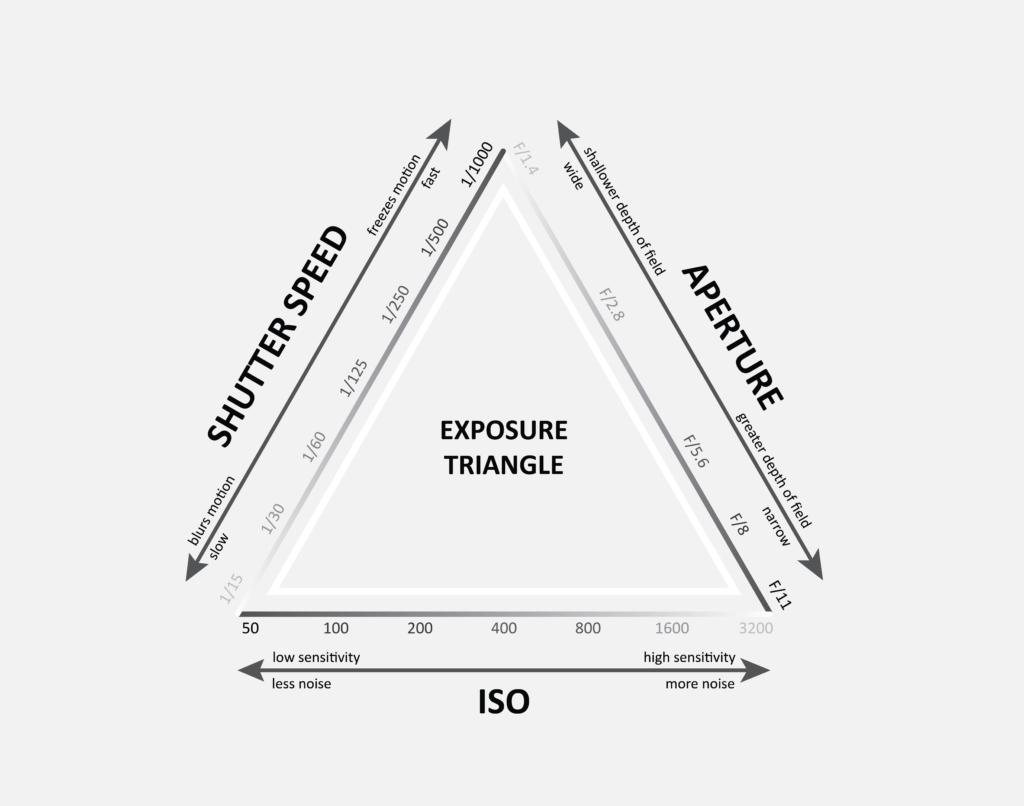DIGITAL PHOTOGRAPHY
Photography is the art of capturing light with a camera, usually via film or a digital sensor, to create an image. With the right camera equipment, you can even photograph the wavelengths of light invisible to the human eye, including UV, infrared, and radio.
Whether you will be documenting your site, gathering material for a collage, or taking model photos, understanding the basics of photography will help you have a better overall grasp of your work and process.
The Three Fundamental Camera Settings
Your camera has doses of settings and menu options. If you pick the wrong camera settings, it's possible that your photo won't turn out the way you want. It might seem challenging to have to juggle all of these parameters simultaneously, especially in the field. But it's easier than you might think. In fact, most of the menu options are things you'll only set once, then rarely or never touch again. Only a few need to be changed frequently and have the greatest impact on the outcome of your photographs.
The three most important settings are called Shutter Speed, Aperture, and ISO. All three of them control the brightness of your photo, although they do so in different ways. Knowing their effects and how they influence each other will let you have maximum control over the pictures you take.
- Shutter speed: The amount of time your camera sensor is exposed to light while taking a picture.
- Aperture: Represents a “pupil” in your lens that can open and close to let in different amounts of light.
- ISO: In simplified terms, it's the sensitivity of the film or the camera's sensor to light.
In the diagram below you can see how all of these three settings interact with each other in controlling the exposure of the photo. This image is meant as a summary and a kind of cheat sheet of the concepts that will be covered in the following chapters. It illustrates the interdependency of the three settings and how, if we change one, the other two would need to be adjusted accordingly for correct exposure. Understanding their interdependence and balancing the visual effects that each of them brings, will help you have greater control over the pictures you take.
In the following chapters, we will discuss the basics of the listed settings and the different effects they bring to the final picture.



